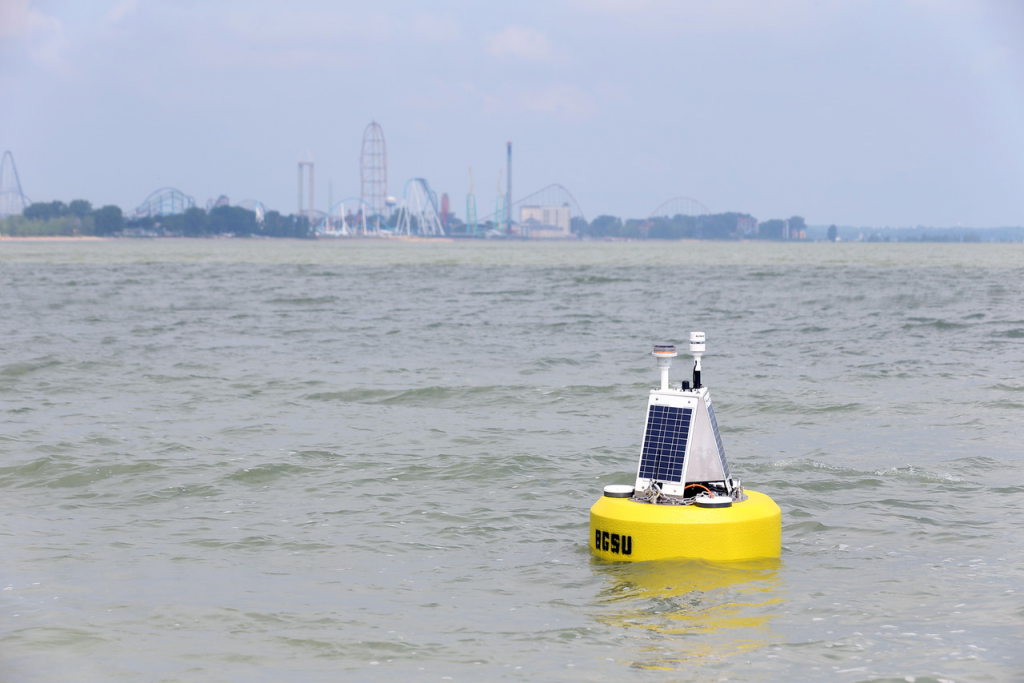By Mike McKay – University of Windsor
This is part of the Smart Project Series—stories published by Smart Great Lakes Initiative (SGLi) partners that explore current or future projects that sum up what it means to be “smart,” as established in the Common Strategy for Smart Great Lakes.
The Common Strategy is the key document of the SGLi and will be available for public comment Aug. 23-Sept. 24. Learn more and review the document.

Water resource security is a global concern, even in the Great Lakes basin where freshwater is abundant. Urbanization coincident with rapid economic development often leads to compromised water quality. Likewise, nutrient loading from watersheds supporting intensive agricultural operations results in eutrophication and in some cases, cyanobacterial harmful algal blooms (cyanoHABs).
Timely detection of cyanoHABs and their associated toxins is essential to inform intelligent community water management. The water crisis in Toledo, Ohio in August 2014 which left over 400,000 residents without access to safe drinking water for nearly 3 days spurred a wave of ‘smart’ innovation to Lake Erie aimed at providing early warning of blooms. With support from the statewide Harmful Algal Bloom Research Initiative and the Ohio EPA, a flotilla of >20 water quality sondes are deployed through Ohio waters. Most of these instruments include sensors for phycocyanin, a pigment diagnostic of cyanobacteria, the toxin-producing organism responsible for the water crisis. In many cases, the instruments are deployed near municipal water intakes or directly in the intake well thereby offering year-round monitoring and an early warning system to water utilities of cyanoHABs encroaching on their intakes. Additional sondes at sites removed from water intakes provide real-time data on the formation of different types of cyanoHABs. For example, Sandusky Bay, an estuary of Lake Erie, harbors a cyanoHAB that forms earlier in the season than do blooms that form offshore, yielding microcystin toxin concentrations above the Ohio EPA recreational contact advisory. Such data are useful to both scientists studying drivers of cyanoHAB formation and the public who routinely use the lake for fishing and recreation.
Broadening the impact of these efforts has been the integration of the instruments through GLOS to provide real-time data to scientists, water utilities and the public at-large (habs.glos.us/map/). Yearly expansion of GLOS-linked nodes in Lake Erie have more recently added nutrient sensors to autonomously measure fluxes of nitrogen and phosphorus that can stimulate cyanoHAB growth, and water velocity sensors that can inform models predicting where cyanoHABs may form. Robust sensor arrays such as these are becoming more widespread as instrumentation costs fall, driven in part by a current competitive climate to develop novel sensors. Innovation is likewise spurred through engagement with participants of entrepreneurship competitions (e.g. ErieHack) to develop and test low-cost, innovative sensor arrays and imaging products. Beyond Lake Erie, sensor networks to monitor cyanoHABs are deployed in Green Bay and with the geographic range of cyanoHABs predicted to expand with climate warming, ‘smart’ monitoring efforts will expand throughout the Great Lakes basin.